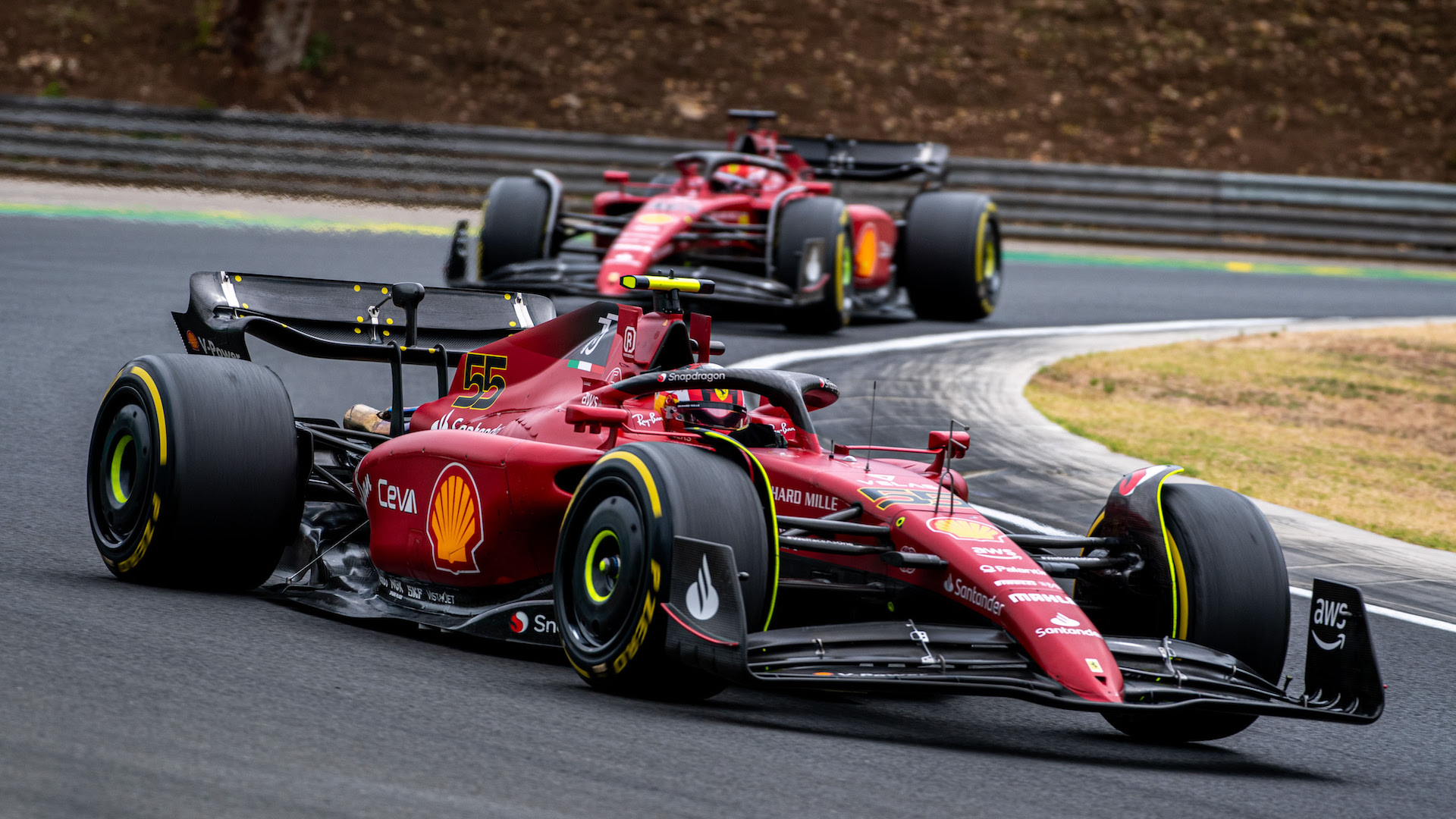

Formula 1 released Tuesday the technical guidelines for its next generation of engines, which will take to the track in 2026. The new ruleset rebalances power outputs to increase emphasis on the hybrid system, which to fans’ dismay, may come at the expense of exhaust noise.
FIA documents outlining the rules were shared on Twitter by racing technical analyst Craig Scarborough, who detailed their main takeaways in a series of posts. Fundamentally, little will change with this new iteration of F1 engines: they’ll still be turbo V6s making about 1,000 horsepower. They will, however, generate less of that power from the internal combustion engine and bridge the gap with a simpler, but far more powerful hybrid system.
In 2026, F1 engines will nearly triple the power of their MGU-K (or KERS) systems from 161 to 469 horsepower. Increased regenerative braking will nearly eliminate the role of friction brakes on the rear axles, akin to how third-generation Formula E cars have foregone rear friction brakes entirely. F1 will also phase out the controversial MGU-H system attached to the turbo, which has long been an expensive barrier for potential new engine suppliers (like Porsche) to overcome.
As the MGU-H was used to spin up the turbo and reduce lag, its removal will dampen throttle response, even more so in conjunction with changes coming to the combustion engine. This new gen of engines will not be allowed variable-length intake trumpets, further decreasing throttle response, which the amped-up hybrid system is supposed to fill in for. Overall combustion power will be reduced by changes to fuel regulations. This will cap the amount of fuel energy flowing into the engine and require the use of carbon capture or biofuels.
Target power output will be 536 horsepower, or about 38 percent less than that of the current V6s. Decreased fuel flow all but guarantees reduced engine revs, as well as reduced exhaust volume. These new engines will emphatically not be screamers, according to Scarborough. Additionally, one of F1’s technical leads Ross Brawn has predicted that 2026’s cars will become smaller as a result of these changes, though probably no lighter.
Some of the changes align with recommendations for next-gen F1 engines I called for back in 2018, notably the elimination of the MGU-H and the partial de-limitation of the MGU-K. I think they missed the mark by capping fuel flow rates and continuing to mandate the V6 format, though it’s understandable given the apparent emphasis on parts standardization and cost control.
F1’s claimed emphasis on “net-zero exhaust CO2 emissions” rings hollow, just like its supposed commitment to going carbon-neutral by 2030. If anything, the new ruleset shows that F1 still has tons of progress to make in the engine department, because if years of pressure from current engine suppliers are only having an effect now, God knows when we’ll see any engines other than V6s in F1 again.
Got a tip or question for the author? You can reach them here: james@thedrive.com